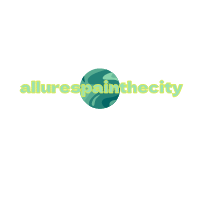Basics of hydrotherapy: History and principles of the method
Hydrotherapy, or hydrotherapy, is one of the oldest methods of therapy using the healing properties of water. The origins of hydrotherapy are believed to date back to Ancient Egypt, Greece and Rome, where baths and mineral waters were used to improve health and well-being. These ancient civilizations understood that water could have both a calming and stimulating effect on the body, depending on the temperature and the form in which it was applied.
The basic principles of hydrotherapy are based on the properties of water as a conductor of heat and cold, as well as on its mechanical effect on body tissue. Using hydrotherapy, you can improve blood circulation, stimulate the lymphatic system, relieve muscle tension and pain. The temperature of the water and the type of treatment are selected depending on the needs of the patient and the desired therapeutic effect, be it relaxation, detoxification or stimulation.
Physiological effects of hydrotherapy on the body
The physiological effects of hydrotherapy on the body are related to the body’s response to thermal and mechanical stimuli. Warm water helps dilate blood vessels, improves circulation and relaxes muscles, which helps relieve tension and fatigue. Cold water, on the contrary, causes vasoconstriction, which helps reduce inflammation and speeds up recovery after exercise.
In addition, hydrotherapy activates the immune system, stimulating the production of white blood cells and strengthening the body’s protective functions. The mechanical action of water, such as water jet massage, helps improve lymphatic drainage and helps remove toxins from the body. Regular use of hydrotherapy improves overall well-being, increases energy levels and promotes rejuvenation of the body.
Hydrotherapy techniques and methods: baths, showers, wraps
There are many hydrotherapy techniques and methods, each with its own unique benefits and indications for use. One of the most common methods is taking baths with the addition of mineral salts or essential oils, which enhance the therapeutic effect of water. Baths can be either hot or cold, depending on the desired result: hot baths relax and soothe, while cold baths tone and strengthen.
Other popular methods include contrast showers, which alternate between hot and cold water to stimulate circulation and strengthen blood vessels, and wraps, in which the body is wrapped in a cloth soaked in medicinal solutions. These methods help improve metabolism, relieve swelling and speed up the recovery process from injuries and illnesses. Hydromassage is also an important part of hydrotherapy, used to treat various diseases and improve overall health.
Hydrotherapy for skin rejuvenation: mechanisms and effects
Hydrotherapy has powerful skin rejuvenating properties due to its unique mechanical and thermal effects. Hot water improves blood circulation in the skin, helping to saturate cells with oxygen and nutrients, which in turn stimulates cell regeneration and improves overall skin tone. Cold treatments, such as contrast showers or ice baths, help tighten pores, improve skin texture and reduce the appearance of wrinkles.
In addition, hydrotherapy helps treat skin problems such as acne, cellulite and other skin conditions. Mineral baths containing salts and microelements help to deeply cleanse the skin, remove toxins and improve the water-salt balance in cells. Regular use of hydrotherapy treatments helps restore skin, making it smoother, firmer and more youthful.
The role of hydrotherapy in relaxation and stress reduction
Hydrotherapy is an effective way to reduce stress and relaxation, thanks to its natural properties that help improve mental and physical well-being. Warm baths and hydromassage help relax muscles, relieve tension and promote the production of endorphins – happy hormones that improve mood and reduce anxiety. Water has a calming effect on the nervous system, helping to reduce symptoms of stress and depression.
In addition, procedures using water can serve as an excellent way to meditate and restore mental balance. The sound of water and the sensation of its touch on the skin help calm the mind and immerse you in a state of deep relaxation. Regular hydrotherapy sessions help strengthen the nervous system, improve sleep quality and increase overall vitality levels.
Contraindications and precautions when using hydrotherapy
Hydrotherapy may be contraindicated in some cases, so it is important to consult a doctor before starting procedures.
Contraindications include:
- Acute inflammatory diseases.
- Cardiovascular diseases such as hypertension or coronary heart disease.
- Thrombophlebitis and bleeding tendency.
- Infectious skin diseases.
- Pregnancy and lactation (in some cases).
Precautions when performing hydrotherapy:
- Always begin procedures with a consultation with a specialist.
- Monitor the water temperature and do not use too hot or cold water.
- Limit your time in water as recommended by your doctor.
- Avoid hydrotherapy if you are feeling unwell or have an acute illness.
- Regularly undergo medical examinations to monitor your health status during long-term use of hydrotherapy.
Hydrotherapy is an effective method for maintaining health and improving well-being, but it is important to consider contraindications and take precautions to avoid possible complications and get the maximum benefit from the procedures.
Questions and answers
Answer 1: Ancient Egypt, Greece and Rome used hydrotherapy to improve health.
Answer 2: Hydrotherapy improves blood circulation, stimulates the immune system and helps in relieving muscle tension.
Answer 3: The main methods of hydrotherapy include baths, contrast showers, wraps and hydromassage.
Answer 4: Hydrotherapy improves blood circulation, stimulates cell regeneration and helps cleanse the skin.
Answer 5: Hydrotherapy relaxes muscles, improves mood and calms the nervous system, which helps reduce stress levels.

